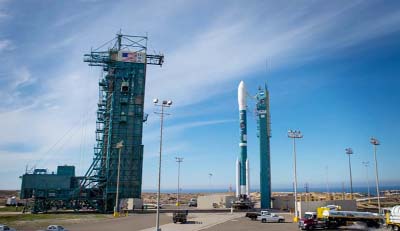
Reuters, CAPE CANAVERAL : An unmanned Delta 2 rocket lifted off from California today carrying a NASA satellite to measure how much water is in Earth’s soil, information that will help weather forecasting and tracking of global climate change.The tiny amount of soil moisture links the planet’s overall environmental systems – its water, energy and carbon cycles – as well as determines whether particular regions are afflicted with drought or flooding.”It’s the metabolism of the system,” NASA’s Soil Moisture Active Passive (SMAP) observatory lead scientist Dara Entekhabi told reporters at a prelaunch news conference.The 127-foot rocket, built and flown by United Launch Alliance, blasted off at 6:22 am, local time, from Vandenberg Air Force Base, located on California’s central coast, a live NASA Television broadcast showed.The launch had been delayed a day by high winds and a second day to make minor repairs on the rocket’s insulation.Perched on top on the rocket was NASA’s 2,100-pound SMAP, which will spend at least three years measuring the amount of water in the top 2 inches of Earth’s soil.Overall, soil moisture accounts for less than 1 percent of the planet’s total water reservoir, with 97 per cent in the planet’s oceans and nearly all of the rest locked in ice, said Entekhabi, from the Massachusetts Institute of Technology.Currently, scientists rely largely on computer models to account for soil moisture.But from its orbital perch 426 miles above Earth, SMAP has two microwave instruments to collect actual soil moisture measurements everywhere on Earth and update the measurements every two- to three days.Including the launch and three years of operations, the mission is costing NASA $916 million. United Launch Alliance is a partnership of Lockheed Martin Corp and Boeing Co.

